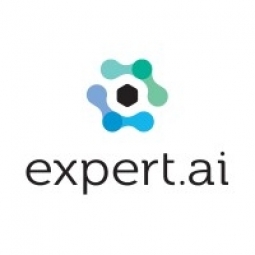公司规模
Large Corporate
地区
- Europe
国家
- France
产品
- Expert.ai technology
技术栈
- Natural Language Processing
- Data Aggregation
实施规模
- Enterprise-wide Deployment
影响指标
- Productivity Improvements
- Digital Expertise
技术
- 分析与建模 - 自然语言处理 (NLP)
适用行业
- 医疗保健和医院
- 教育
适用功能
- 人力资源
用例
- 人员跟踪与监控
- 监管合规监控
服务
- 数据科学服务
关于客户
Inserm, the French National Institute of Health and Medical Research, is a public research institute dedicated to biological and medical research and human health. It is the only institute of its kind in France. Inserm employs nearly 13,000 researchers, engineers, and technicians across more than 300 research laboratories. The institute is involved in a wide range of research activities, from basic research to clinical research, and is committed to advancing knowledge in the field of health and medicine.
挑战
Inserm, the only public research institute in France dedicated to biological and medical research and human health, faced a challenge in evaluating the quality of job candidates. The institute had to coordinate with up to five external experts to analyze candidates based on their achievements and descriptions of their field of expertise. This process was time-consuming and lacked transparency. Inserm sought an automated solution to verify the expertise of their candidates and shorten the recruitment process.
解决方案
Inserm implemented expert.ai technology to rapidly identify the top experts in their candidate pool. The technology aggregates and analyzes published scientific articles and reports from hundreds of globally respected journals. The talent team simply enters a candidate or project name in the search field and activates the ‘Expert lens’ to view a full list of domain experts. Expert.ai evaluates a candidate’s level of expertise based on the reputation rating of the journals in which they have been published. Keywords associated with the candidate are also extracted which can help quickly verify areas of expertise. The system also presents publication metrics and collaboration networks so Inserm can identify both established opinion leaders as well as rising stars.
运营影响

Case Study missing?
Start adding your own!
Register with your work email and create a new case study profile for your business.
相关案例.

Case Study
Hospital Inventory Management
The hospital supply chain team is responsible for ensuring that the right medical supplies are readily available to clinicians when and where needed, and to do so in the most efficient manner possible. However, many of the systems and processes in use at the cancer center for supply chain management were not best suited to support these goals. Barcoding technology, a commonly used method for inventory management of medical supplies, is labor intensive, time consuming, does not provide real-time visibility into inventory levels and can be prone to error. Consequently, the lack of accurate and real-time visibility into inventory levels across multiple supply rooms in multiple hospital facilities creates additional inefficiency in the system causing over-ordering, hoarding, and wasted supplies. Other sources of waste and cost were also identified as candidates for improvement. Existing systems and processes did not provide adequate security for high-cost inventory within the hospital, which was another driver of cost. A lack of visibility into expiration dates for supplies resulted in supplies being wasted due to past expiry dates. Storage of supplies was also a key consideration given the location of the cancer center’s facilities in a dense urban setting, where space is always at a premium. In order to address the challenges outlined above, the hospital sought a solution that would provide real-time inventory information with high levels of accuracy, reduce the level of manual effort required and enable data driven decision making to ensure that the right supplies were readily available to clinicians in the right location at the right time.

Case Study
Gas Pipeline Monitoring System for Hospitals
This system integrator focuses on providing centralized gas pipeline monitoring systems for hospitals. The service they provide makes it possible for hospitals to reduce both maintenance and labor costs. Since hospitals may not have an existing network suitable for this type of system, GPRS communication provides an easy and ready-to-use solution for remote, distributed monitoring systems System Requirements - GPRS communication - Seamless connection with SCADA software - Simple, front-end control capability - Expandable I/O channels - Combine AI, DI, and DO channels

Case Study
Driving Digital Transformations for Vitro Diagnostic Medical Devices
Diagnostic devices play a vital role in helping to improve healthcare delivery. In fact, an estimated 60 percent of the world’s medical decisions are made with support from in vitrodiagnostics (IVD) solutions, such as those provided by Roche Diagnostics, an industry leader. As the demand for medical diagnostic services grows rapidly in hospitals and clinics across China, so does the market for IVD solutions. In addition, the typically high cost of these diagnostic devices means that comprehensive post-sales services are needed. Wanteed to improve three portions of thr IVD:1. Remotely monitor and manage IVD devices as fixed assets.2. Optimizing device availability with predictive maintenance.3. Recommending the best IVD solution for a customer’s needs.

Case Study
HaemoCloud Global Blood Management System
1) Deliver a connected digital product system to protect and increase the differentiated value of Haemonetics blood and plasma solutions. 2) Improve patient outcomes by increasing the efficiency of blood supply flows. 3) Navigate and satisfy a complex web of global regulatory compliance requirements. 4) Reduce costly and labor-intensive maintenance procedures.

Case Study
Cloud-based healthcare solution for Royal Philips
Royal Philips wanted to launch its cloud-based healthcare solution HealthSuite Digital Platform in China to deliver services to help cope with challenges related to urbanization and population growth. Philips wanted to achieve this goal by combining mobile, cloud computing and big data technologies. To bring this platform and product to market, Philips required cloud computing and local technical service capabilities in China, in addition to a flexible IT infrastructure that could handle user requests.








